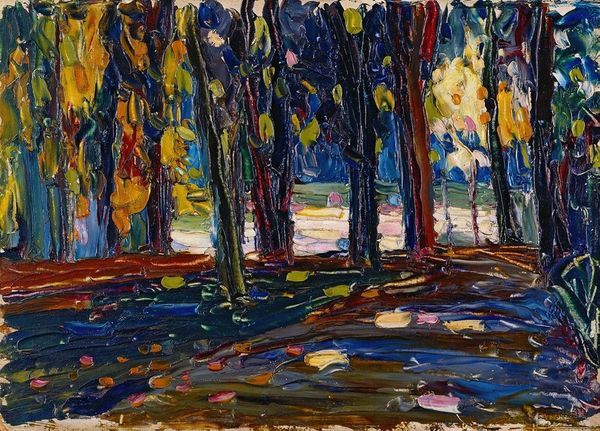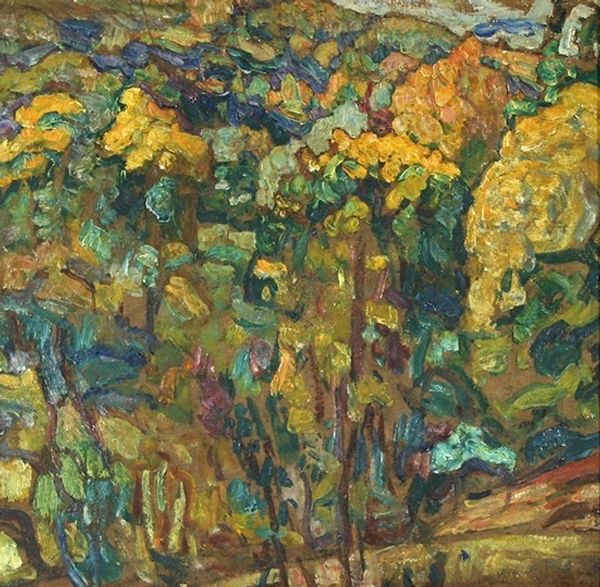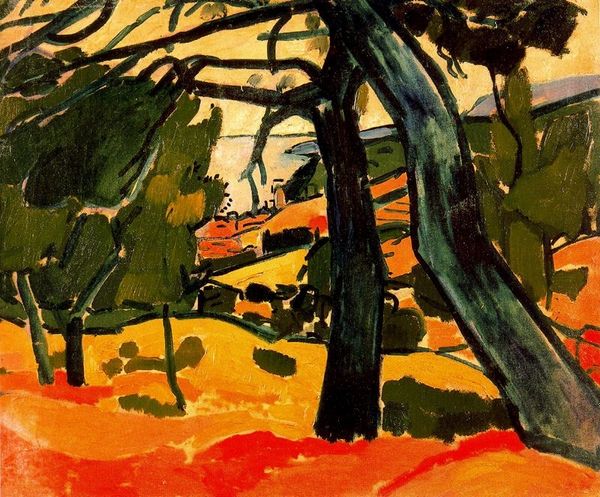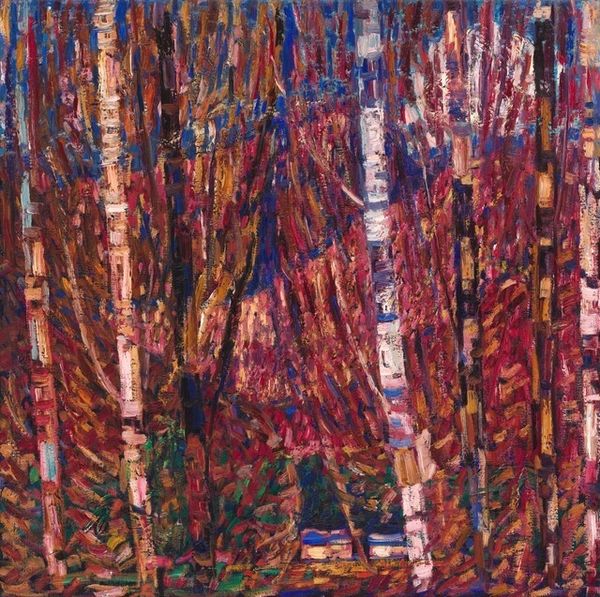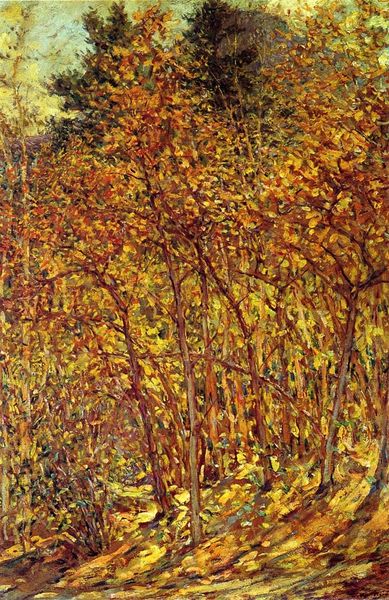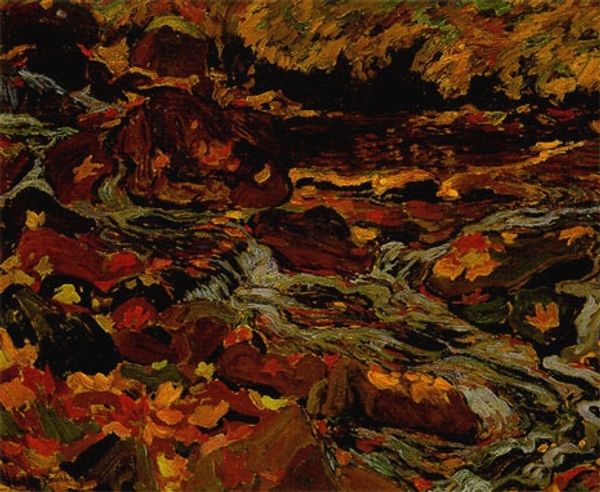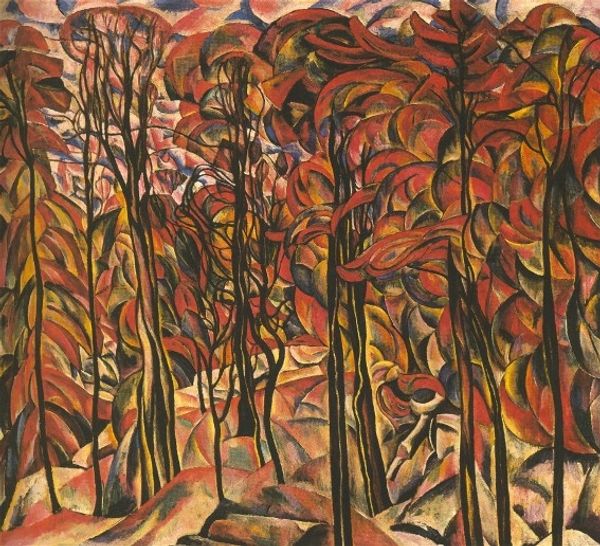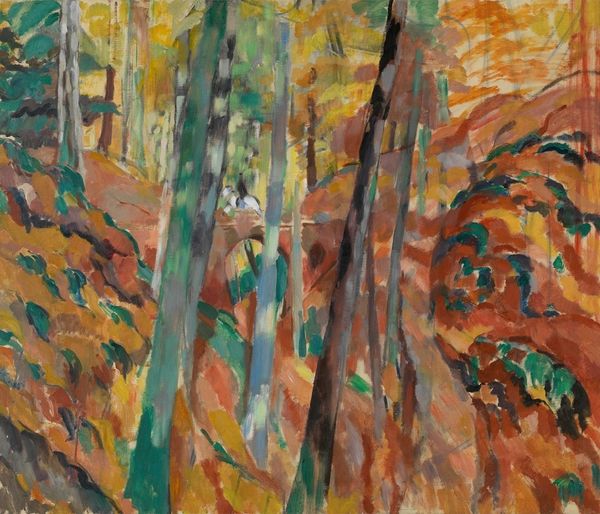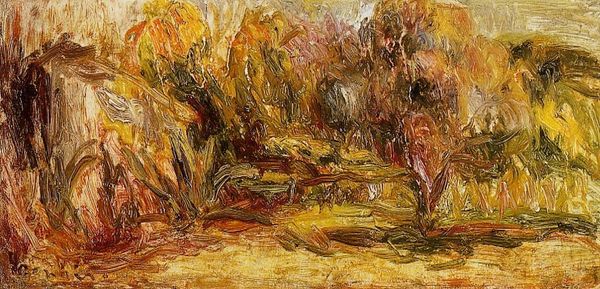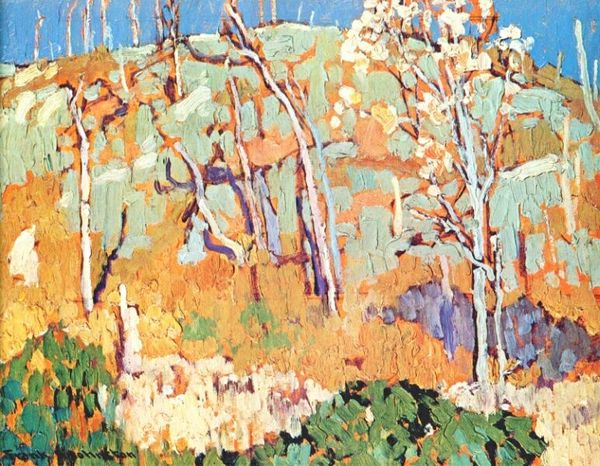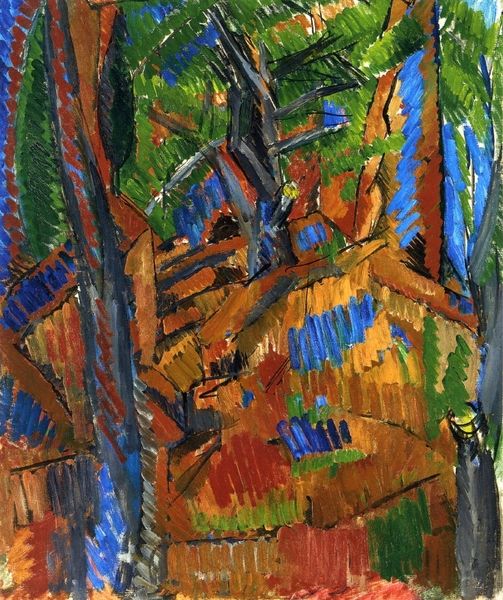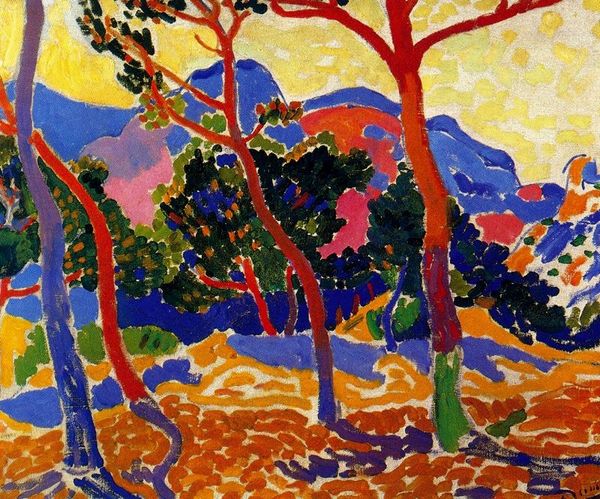
Copyright: Public domain US
A.Y. Jackson’s “Maple Woods, Algoma” is a landscape painting dominated by warm hues, particularly oranges and reds, applied with thick, visible brushstrokes. The eye is immediately drawn to the composition's density, where the forest's elements—trees, leaves, and ground—meld into a textured tapestry. Jackson’s formal approach emphasizes the surface quality of the paint, creating a tactile experience. This aligns with the modernist exploration of materiality, pushing beyond mere representation to foreground the medium itself. The semiotic function of the colors cannot be ignored; red and orange act as signifiers for warmth and decay in autumn. However, the density of the composition challenges traditional landscape painting’s clear spatial relationships, unsettling our expectations of depth and perspective. Ultimately, Jackson’s piece uses the visible brushwork and heightened color to engage in a dialogue about the act of painting itself. It recognizes that art is not a reflection but an interpretation of nature through a structured application of form and material.
Comments
No comments
Be the first to comment and join the conversation on the ultimate creative platform.
